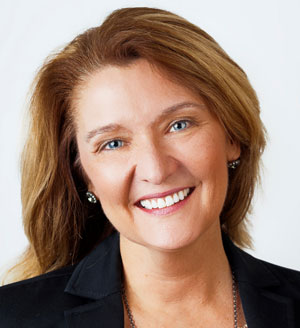
By Kristine Berry, RDH, MSEC
Could your team development measures be hurting morale?
Knowing where Chicago is won’t help me get there unless I also know where I am relative to Chicago. Am I trying to get there from Charlotte or Boston? It seems apparent that we need to know where we are and where we want to be in order to get there. Yet, when it comes to team development, a surprising number of organizations look for shortcuts, without clearly thinking about where they stand. In the end, this shortcut can be costly in terms of time, money and employee morale.
Over the past decade, the popularity of team building or team appreciation has grown exponentially. The terms team facilitation, team building, team consulting, team coaching and team training are often used interchangeably, and many dental groups are eager to capitalize on the perceived benefits. But they might not know what they are honestly getting. Some succeed despite themselves. Some fail when they didn’t have to. Most employees and outcomes suffer more than they should have.
In this article, we will discuss:
- Clear distinctions between five team developmental modalities, with the benefits and limitations of each.
- Team coaching and literature insights.
Team development modalities
 There are a variety of different ways of developing your groups or teams, including:
There are a variety of different ways of developing your groups or teams, including:
- Team facilitation.
- Team training.
- Team building.
- Team consulting.
- Team coaching.
Each of these approaches – or modalities – has value, and each is appropriate in certain circumstances. It’s important to be clear about which modality you’re using at any given moment, as well as the outcomes you’re likely to achieve with that approach. It is also vital to understand the distinctions between the various modalities and what each modality can achieve. The following is an example of the five team modalities:
Modality No. 1: Team facilitation
- Approach. Active guidance and management of a specified method, process or tool during a planned meeting or work session.
- Facilitator responsibility. Owning and implementing the method, process or tool effectively to drive the team’s desired results.
- What it sounds like. “The next step in this process is writing a systems checklist. I’ll remind you of the guidelines and lead you through it.”
- Direct outcomes. Achievement of a specific team goal or deliverable (e., case acceptance system).
- Back at the office impact. The team leader and members may adopt useful facilitator behaviors and/or a new method, process or tool.
Modality No. 2: Team training
- Approach. Learning a set curriculum delivered through reading, teaching and exercises.
- Trainer responsibility. Accurately and effectively communicating subject matter; providing expertise in a given subject area (e., hygiene retention).
- What it sounds like. “Now that you’ve learned about building value in your hygiene department, split up into pairs and discuss how you can incorporate these tools and strategies in your offices.”
- Direct outcomes. Increased knowledge and acquisition of new skills.
- Back at the office impact. Learned skills may be applied to the day-to-day duties and responsibilities of the office and/or a new system for the office.
Modality No. 3: Team building
- Approach. Games, simulations, role play and other structured group experiences delivered during special event or meeting.
- Team builder responsibility. Structuring and leading an engaging, bonding experience for the team.
- What it sounds like. “Everyone grab a blindfold, a piece of rope and a rubber ball.”
- Direct outcomes. Greater team spirit, cohesion and personal trust.
- Back at the office impact: Team spirit, trust and cohesion may have a positive impact on team member interactions.
Modality No. 4: Team consulting
- Approach. Assessment or survey followed by recommendations and expert direction or advisory support.
- Consultant responsibility. Providing relevant and useful analysis and advice.
- What it sounds like. “You’re missing some critical metrics and systems in your practice. I recommend you do A, B and C…”
- Direct outcomes. Expertise and directives of what needs to be accomplished to achieve the desired
- Back at the office impact. Steps and strategies the team might commit to and implement to facilitate changes in their workflow.
Modality No. 5: Team coaching
- Approach. Real-time interventions during regular team meetings and work sessions.
- Coach responsibility. Sharing in-the-moment observations and questions that expand team awareness and the potential for change.
- What it sounds like. “Over the past five minutes, what have you noticed about the team’s approach to X? What would you like to do differently going forward?”
- Direct outcomes. Immediate improvements in awareness, skills and effectiveness.
- Back at the office impact. Positive changes in individual and team performance can be observed and reinforced right away.
A closer look at team coaching
Team coaching, as defined above, is a relatively recent concept in dentistry. It is growing in popularity for a variety of reasons. The most cited reason is that it supports sustainable implementation and accountability, because it can be done in real time while doing real work. Then, organizations have less and less time to shut down practice locations and go off-site for traditional team events, and budgets are tight. Many consumers of team development programs (an amalgam of personal development plans and the business objectives) not only want to provide learning opportunities for their employees, they also seek support through the implementation of back-in-the-office change to achieve sustainable results.
Recently, while coaching a team, I noted their lateness in beginning their morning huddle. The pattern of lateness is the behavior. Moreover, I noticed no one said anything about it. You may ask yourself, “Well, has the team been trained on how to conduct a morning huddle?” Yes. “Does the team understand the meaning of having a morning huddle?” Yes. “Are there checklists and standard operating procedures in place to follow regarding the process of a morning huddle?” Yes.
Training, facilitation (role play), consulting (huddle system or process) and team building (agreement to have a huddle) apparently had been addressed for this team. Yet, when a team member or a doctor walked in late, no one apologized and the huddle started all over again. I sensed a feeling of discomfort by the team members who were there on time; the huddle started late, it was choppy up front, team members’ time was being wasted, and there was a general sense of frustration.
I asked the team about the norms around this behavior. When I explored this question with them, I found they had the following beliefs regarding lateness:
- Being on time doesn’t matter. No one cares, no one calls anyone out and no one is held accountable.
- The late team member and doctor told me, “My time is more important than theirs.”
These assumptions drive the behaviors that create the outcome: unproductive or ineffective huddles and beginning the day with team members feeling disrespected and frustrated. A negative feeling was palpable throughout the day and the cost to the practice could be seen in terms of:
- Higher turnover rate of valued employees.
- Decreased morale and motivation, resulting in lower productivity.
- Excessive owner/managerial time devoted to addressing employee distress over why it was okay for others to be late.
As a team coach, I don’t believe this team needed another webinar or training on the mechanics of a huddle. Yet, there was an opportunity to coach the team leader and owner so they would have the outcome they desired: respectful conduct and accountable performance – in other words, a fully present, engaged and productive morning huddle.
My experience having coached hundreds of teams has shown me that teams develop habitual behaviors and norms, which may undermine individual and collective change. Hence, when transformation is the goal, an integrated team development approach that incorporates team coaching offers the unmatched potential to guide the team where it needs to go. Team coaching as a core practice, supported by other modalities that provide the necessary tools, skills and methods within a framework, serves as an essential driver of a team’s success.
Team coaching and team literature insights
In the academic world of team coaching, the following are the thought leaders: Richard Hackman, Ruth Wageman, Peter Hawkins, David Clutterbuck, Christine Thornton, Patrick Lencioni, Alex Caillet and Amy Yeager. Their published works speculate that team coaching is 30 years behind individual coaching in definitions, training and research. The research related to skill acquisition of coaches suggests a lack in the developmental pathway from individual coach training and experience to a masterful team coach. It seems that most coaches just transfer the skills they use to coach individuals, add a dash of facilitation (facilocoaching, as I call it) or team building, and wing it. Key insights from peer review articles have identified that it’s the rare team coach who starts from a deep understanding of team process and dynamics, complex adaptive systems, complexity theory, a background in interpersonal group dynamics or group-based dialogue. Additionally, coaches minimally trained in team development theories rarely reveal to their audience or client whether they are wearing the hat of a team coach, facilitator, consultant or trainer.
Of the 130+ team coaching models identified in the research, the four academic team coaching studies indicate that team coaching has a positive impact on a team’s performance (outcomes), motivation (the effort people invest), innovation, increasing the level of trust and respect (safety) and increasing the level of skills and knowledge within a team.
Summary
Each of the five team development modalities is very helpful in achieving specific team outcomes. But, if the appropriate modality is not applied, the results won’t be as successful. Problems arise when there’s a disconnect between the result you want for your team and the modalities being used to achieve it. Arguably, the most challenging type of outcome to achieve is transformative and sustainable change. Real transformation requires the team to do more than acquire useful tools, learn new systems or skills, or obtain specific short-term results. Team coaching is a way to blend the development and training of teams with a consistent drive toward real, meaningful and sustainable change objectives.
Kristine Berry RDH, MSEC
Kristine Berry is an international speaker and executive coach, specializing in enhancing group practices. If you are looking for a speaker or coach, she invites you to email her at [email protected] or visit her website www.kristineberry.com.
References
- Brown, S. W., & Grant, A. M. (2010). From Grow to Group: theoretical issues and a practical model for group coaching in organizations. Coaching: An International Journal of Theory, Research and Practice, 30-45.
- Caillet, A., & Yeager, A. (n.d.). Team Coaching: A Deep Dive. 2018 Institute of Coaching Conference Presentation.Boston, MA.
- Peters, J., & Carr, C. (2013). Team effectiveness and team coaching literature review. Coaching: An International Journal of Theory, Research and Practice, 116-136.
- Salas, C. E., & Rosen, M. (2008). On Teams, teamwork, and team performance: Discoveries and development. Human Factors, 50 (3).
- What so experienced team coaches do? Current practice in Australia and New Zealand. (2019, February). International Journal of Evidence based Coaching and Mentoring.

